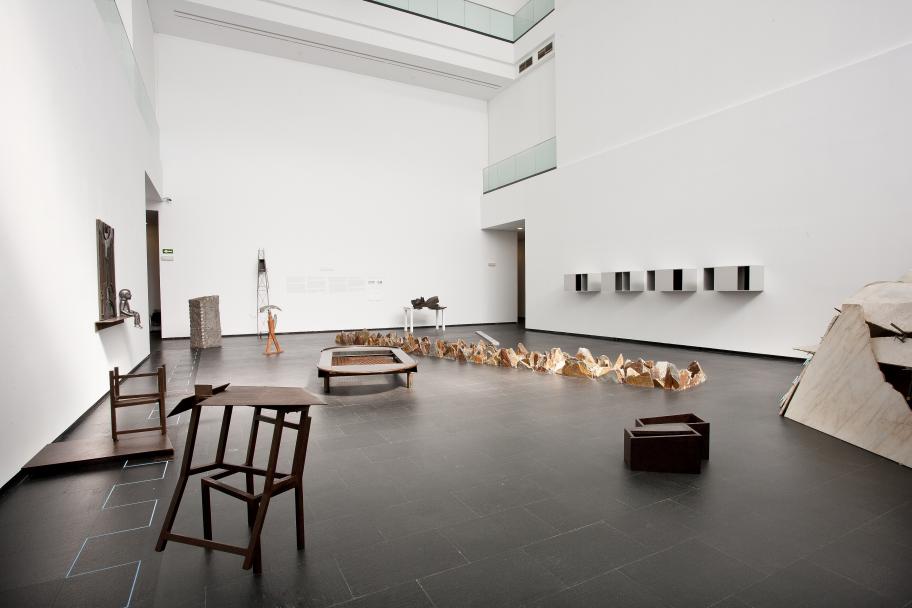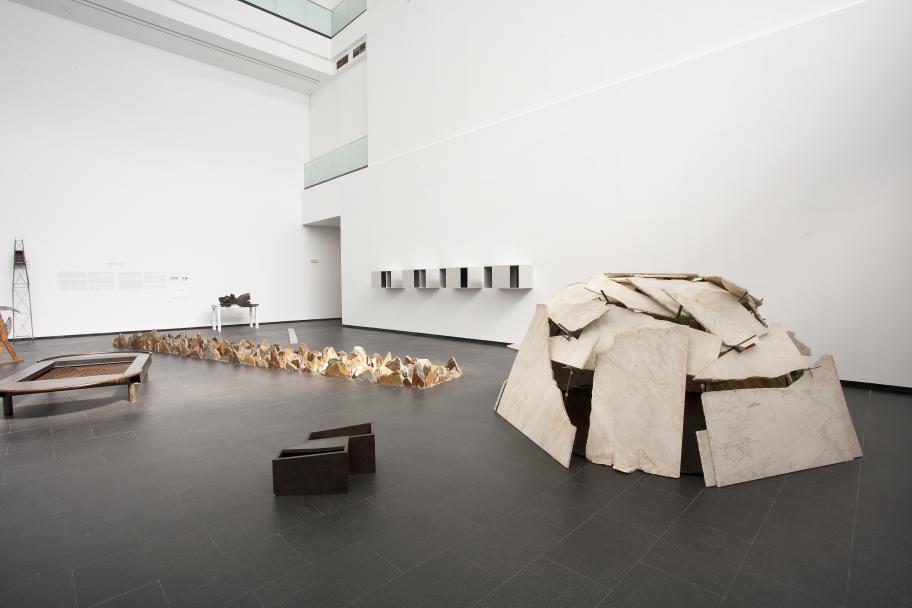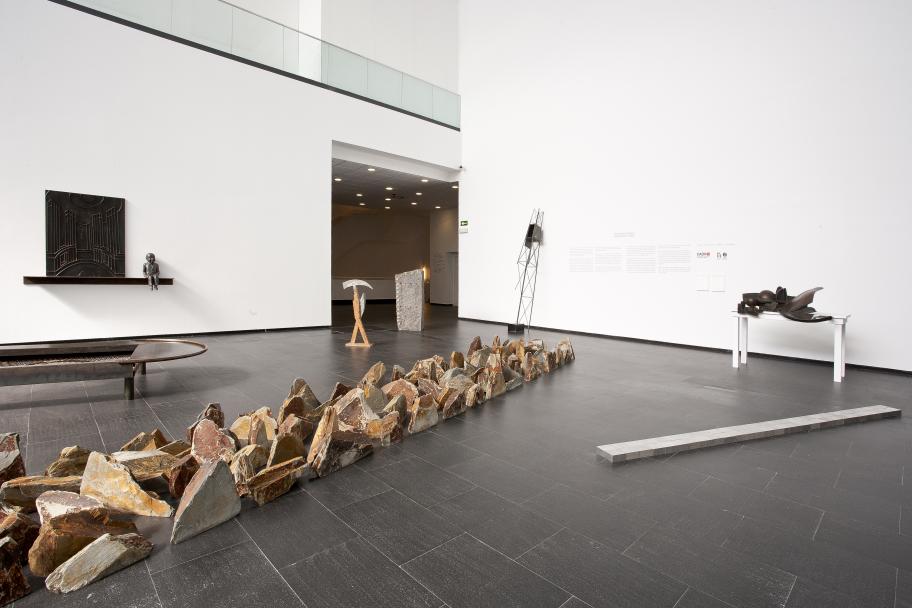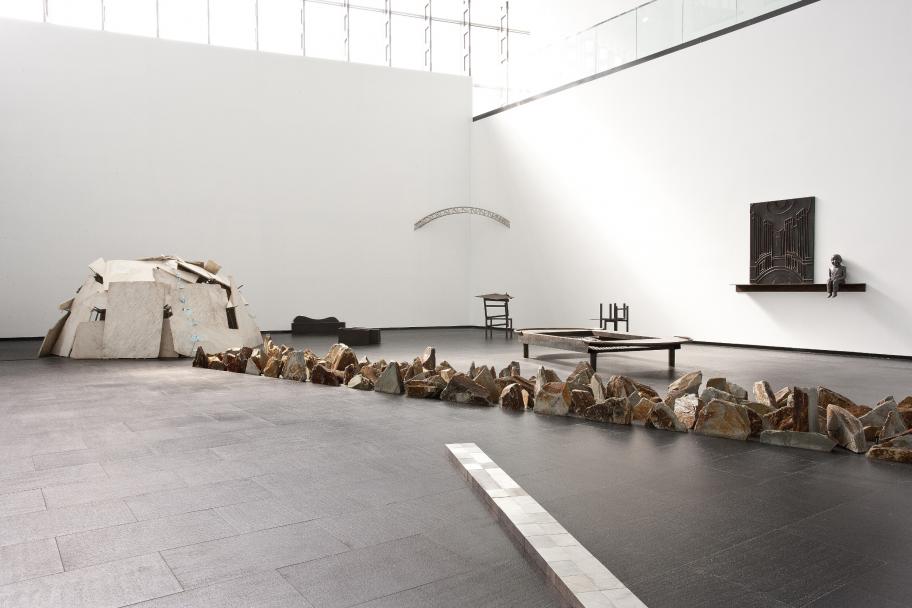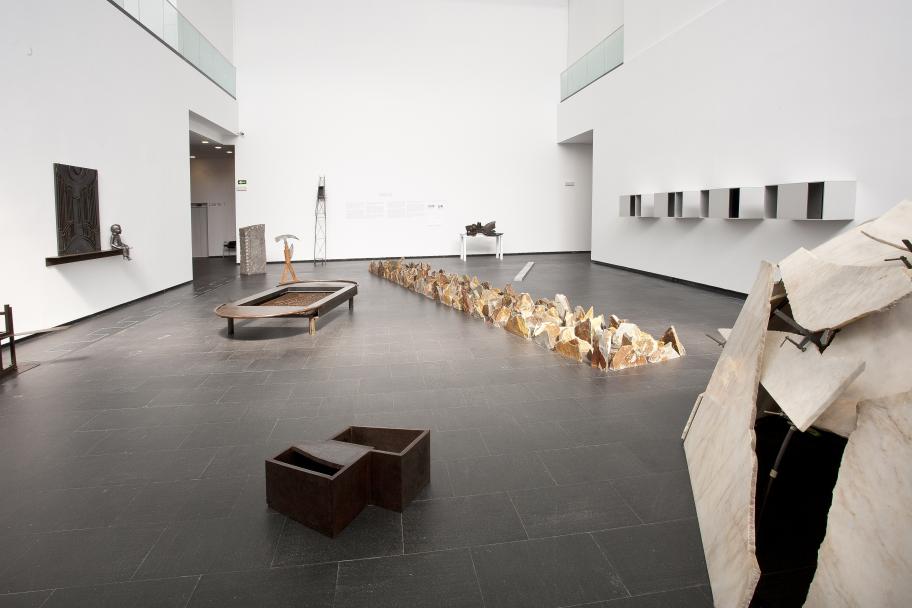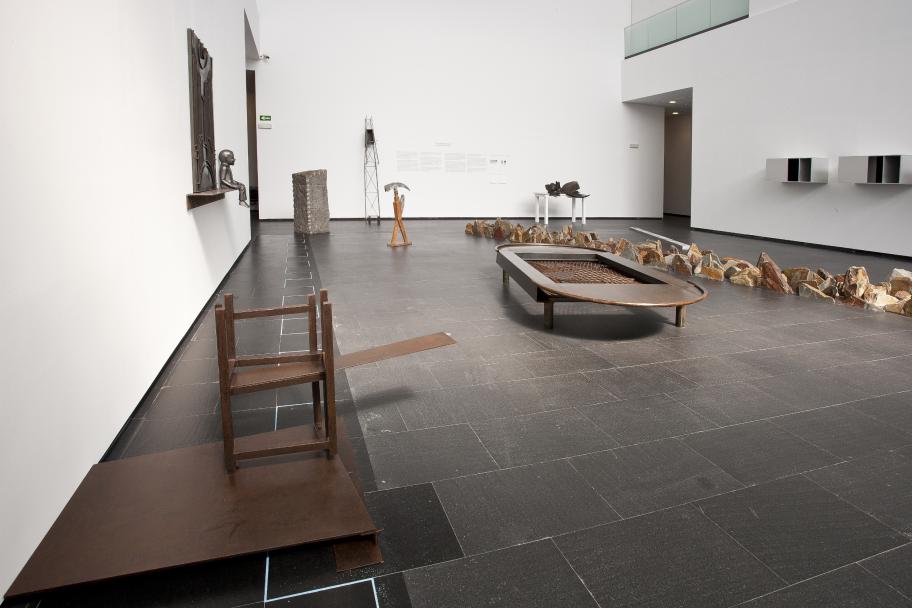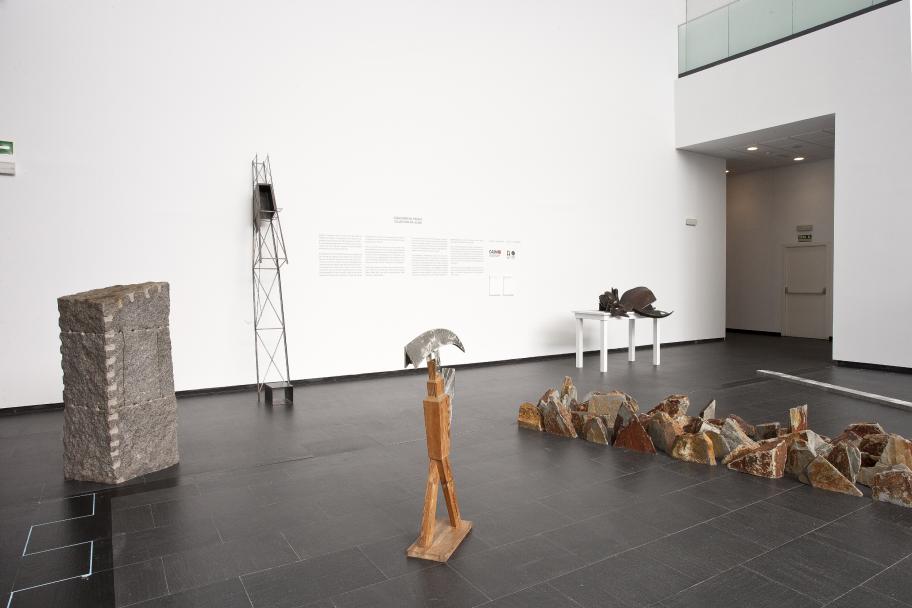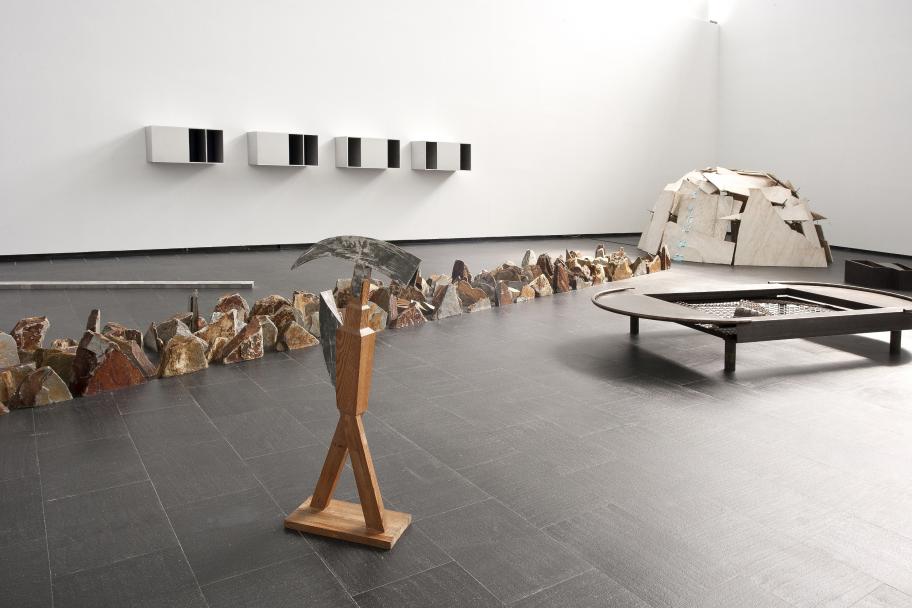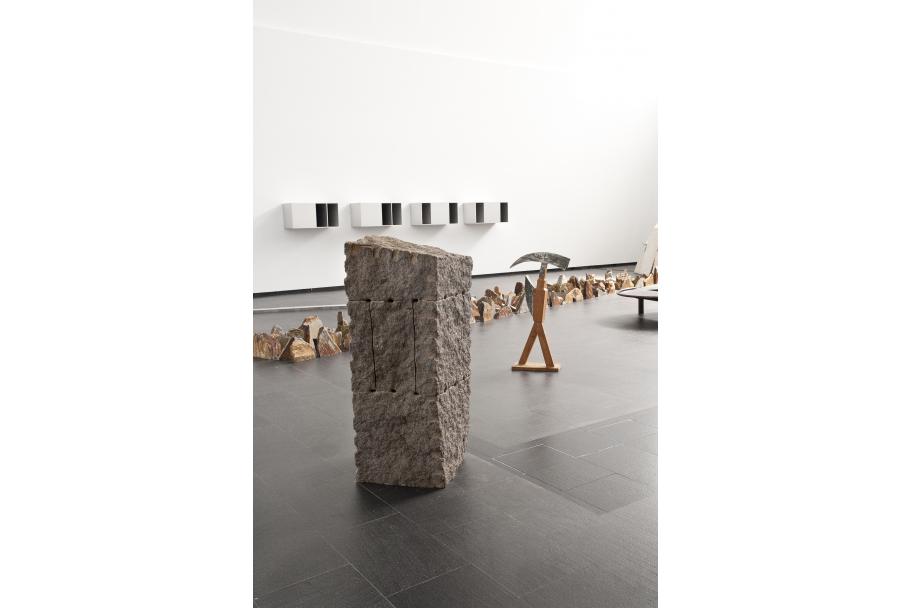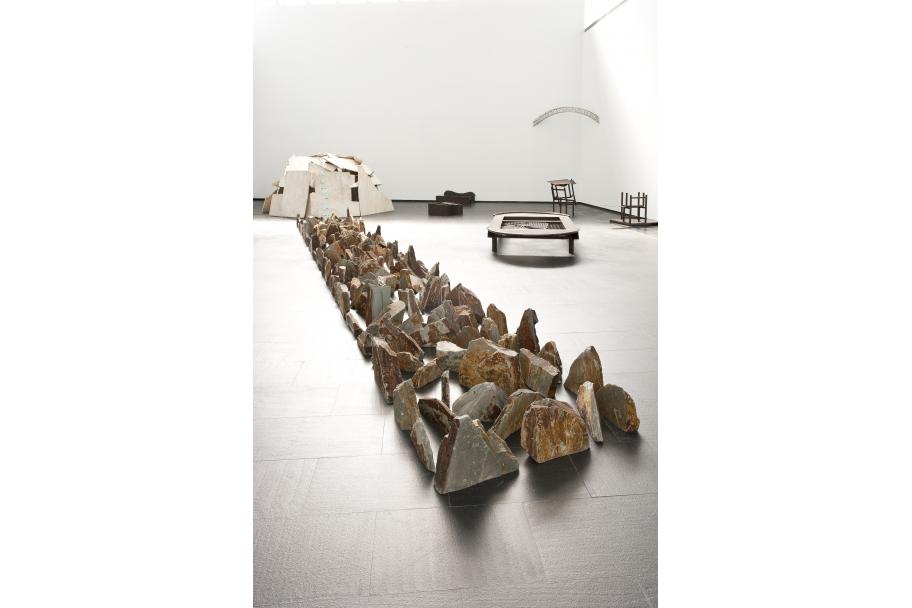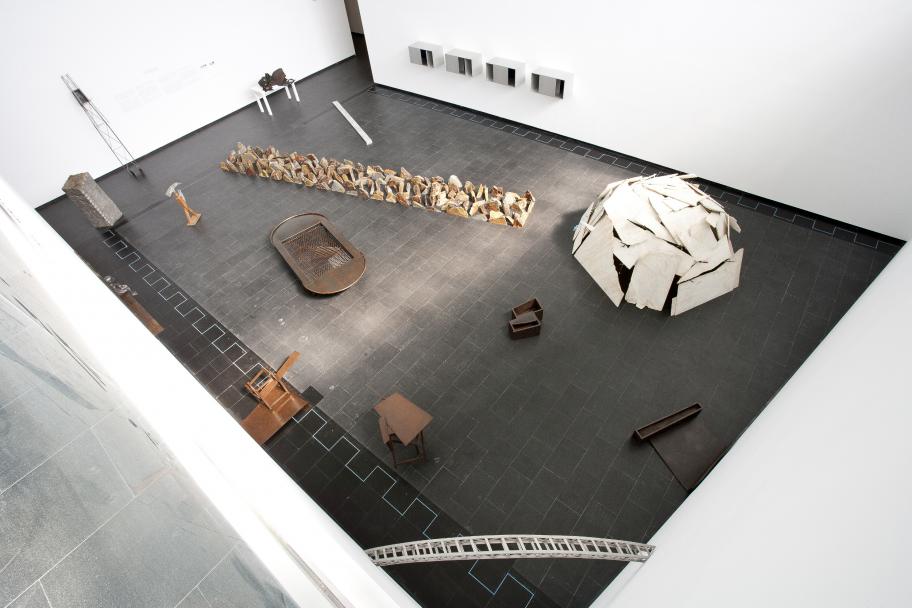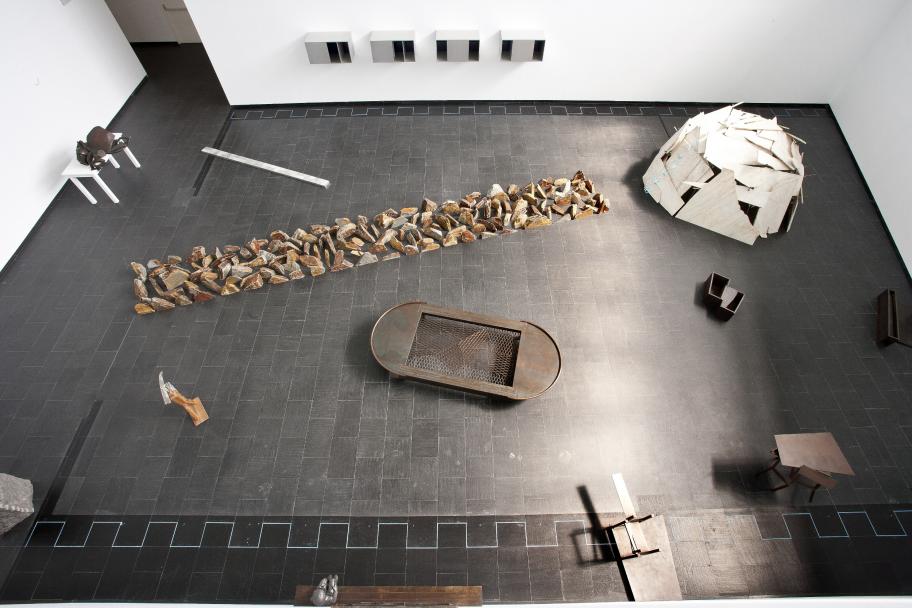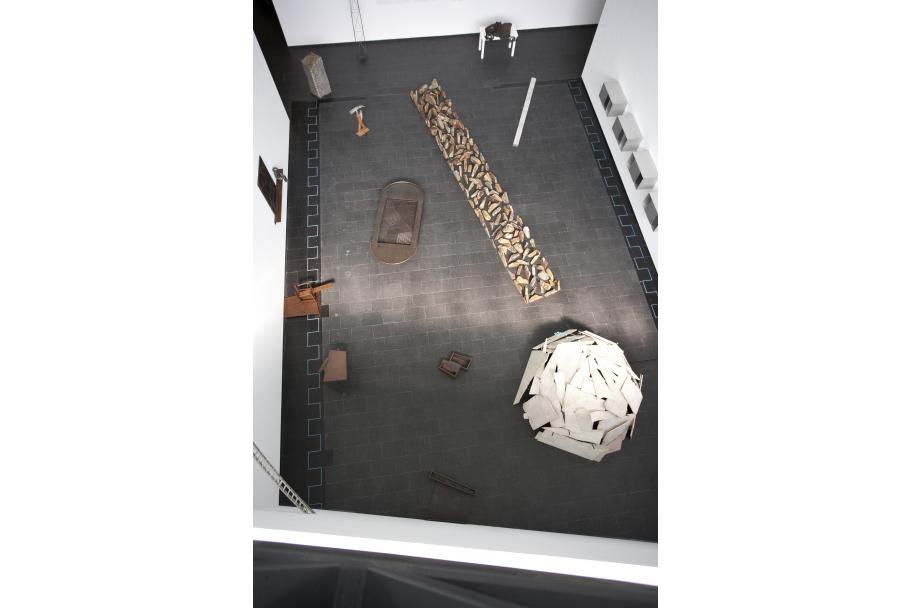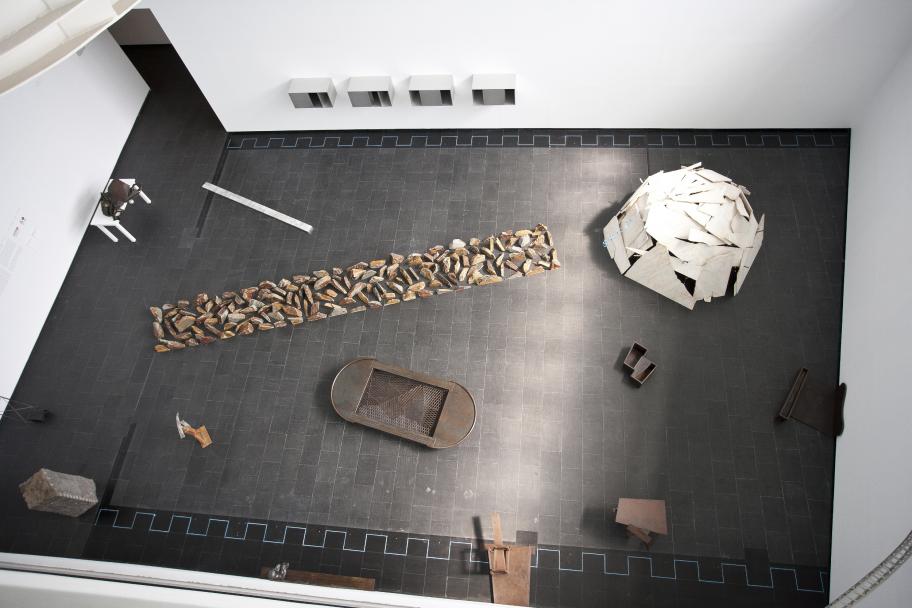- CA2M MUSEUM
- node
- Colección XVI: Escala
Colección XVI: Escala
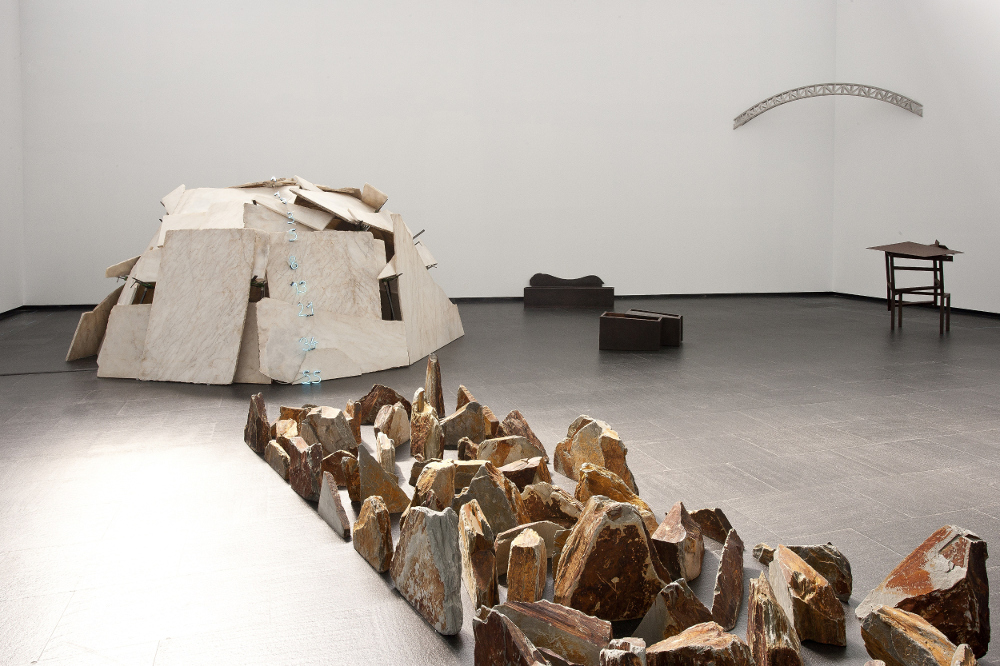
Exposición Colección XVI: Escala en el CA2M. Fotografía: Manuel Blanco
CURATED BY MANUEL SEGADE
Since museums first came into existence back in the eighteenth century, there has been a tradition of exhibiting that consists in showing sculptures in central courtyards and lobbies, allowing various fragments from the history of art to coexist in the same space, as part of a stage setting designed to be viewed by a comparative gaze.
Last December CA2M opened a large new space with natural light which enables it, for the first time, to exhibit the large-format works in the museum’s collection. Furthering our institution’s ongoing exploration into ways of exhibiting artwork and the language of museums, we have installed a sculpture hall that follows in the footsteps of museum convention, but with contemporary works from two distinct moments in recent decades: the tradition of international minimal and conceptual art in the seventies and its developments, based on new British sculpture, in the so-called New Spanish Sculpture from the eighties.
Both a walkthrough among the works in the exhibition on the first floor as well as a bird’s eye view from the runway on the upper floor give rise to a phenomenological experience in which the displacement of the spectator and a consciousness of her/his body bring into play the two basic terms of critique for a proper understanding of sculpture in the seventies and eighties, namely, absorption and theatricality.
Artists: Carl Andre, Txomin Badiola, Anthony Caro, Pello Irazu, Donald Judd, Richard Long, Ángeles Marco, Mario Merz, Juan Muñoz, Miquel Navarro, Ulrich Rückriem, Susana Solano.
Tal como hace Carl André, las esculturas de Donald Judd juegan con la repetición, la estética industrial y los materiales inéditos en el arte. Más que referirse a la realidad, busca generar nuevas experiencias y cuestionar al arte por su propia esencia.
En sus largas y épicas caminatas por tierras remotas, Richard Long va recolectando piedras
que son el punto de partida de su trabajo. En esta pieza combina 248 trozos de pizarra de Cornualles
que coloca sin manipular. Las precisas instrucciones de montaje crean una línea recta,
un orden, a partir de los fragmentos irregulares.
El arte povera de Mario Merz propugnaba una vuelta a la sencillez, lo natural, lo cotidiano, al mismo
tiempo que reforzaba nociones más espirituales de dinamismo y energía. El iglú, construcción
sencilla que representa la noción más básica de refugio, se convirtió en centro de su
trabajo. En paralelo, la progresión propuesta en el siglo XIII por Leonardo Pisano Fibonacci , que
se obtiene mediante la suma de un número y el que le precede (1,2,3,5,8), esconde la explicación
de muchas formas de la naturaleza.

